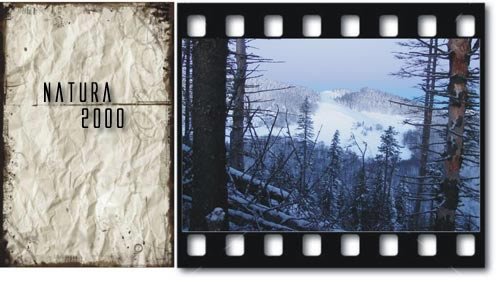|
| Natura 2000 |

|
Short presentation of the Natura 2000 network
For preserving and managing vulnerable species and habitats belonging to the European patrimony, was established an ecological network of natural protected areas, without political and national boundaries.
This network enforced in 1992 with the Habitats Directive, that together with the Birds Directive constitutes the foundation for nature conservation politics in Europe, and represents and European answer towards global biodiversity conservation, aligning at the international obligations upon biodiversity conservation.
The Natura 2000 network is constituted from Special Preservation Areas, designated for one or more than 198 types of habitats and 8000 endangered species, listed in the annexes of the Habitats Directive. According to the data published by the European Commission until this moment were included 2000 sites in the Natura 2000 network.
The objective is that of offering possibilities for vulnerable habitats and species for maintaining, or there where it is necessary, to restore a favourable conservation status besides of their natural areas in Europa.
Forestry and Natura 2000
In the last 50 years, were excessive developed the exploitation and conditioning of wood that conducted at major changes in the sub-Carpathian mountain spaces.
Forests are important from many motives: prevent erosion, stocks water and carbon, and have high recreational and landscape values. Due to their complexity and biological diversity, these are the ideal habitat for a series of plants and animals, and a natural refuge for carnivores such as bears, eagles and wolves, that once were present in the European forests.
Natura 2000 includes both natural forests and administrates semi-natural forests. Designing Natura 2000 doesn’t mean that all forests must be automatically pulled out from the commercial use.
All these concerned, existent management practices should consider natural present values, and particularly species and habitats for which each site was designated.
Recreational activities and Natura 2000
Regardless of their motivations, people chose nature for relaxation in a picturesque environment, other prefer to visit new areas or are interested more in realising in nature diverse activities such as swimming, cycling, fishing or hunting. Natura 2000 offers people unique opportunities of discovering and enjoying the rich natural patrimony of Europe.
Many of these recreational activities can be compatible with the provisions of the Habitats and Birds Directives, as long as they don’t produce adverse effects upon the existent habitats and species.
Hunting is a classic example. Birds and Habitats Directive recognise the legality of the hunting as a form of sustainable use, and doesn’t prohibit it in the Natura 2000 sites.
In exchange, the Directives establish a framework for controlling hunting activities, and assuring the equilibrium between the hunting and the interest of long time maintaining viable and healthy population for the game species.
Tourism is one of the fastest economical growing sectors in Europe. As more and more people work a few hours, and have short but regular vacancies, there is an increasing interest towards many tourism forms, such as nature tourism and an increase of interest towards the natural environment. These alternative forms of tourism increase three times faster than the markets of classic tourism.
Although the area has a high tourism potential due to the landscape’s beauty, tourism appears as an isolated activity, in the last years appearing several initiatives, and being built several agricultural-tourism pensions. There can be observed an increasing tendency for weekend tourism.
|
|






